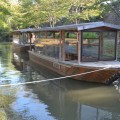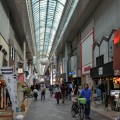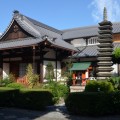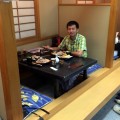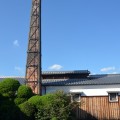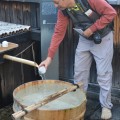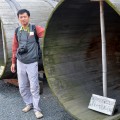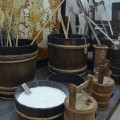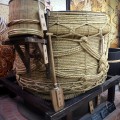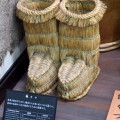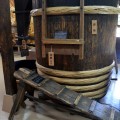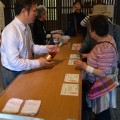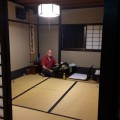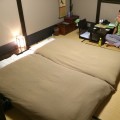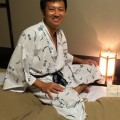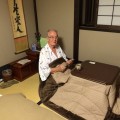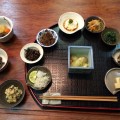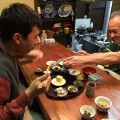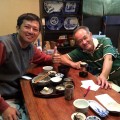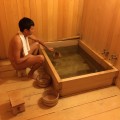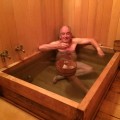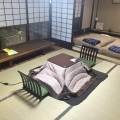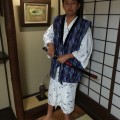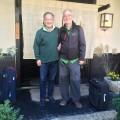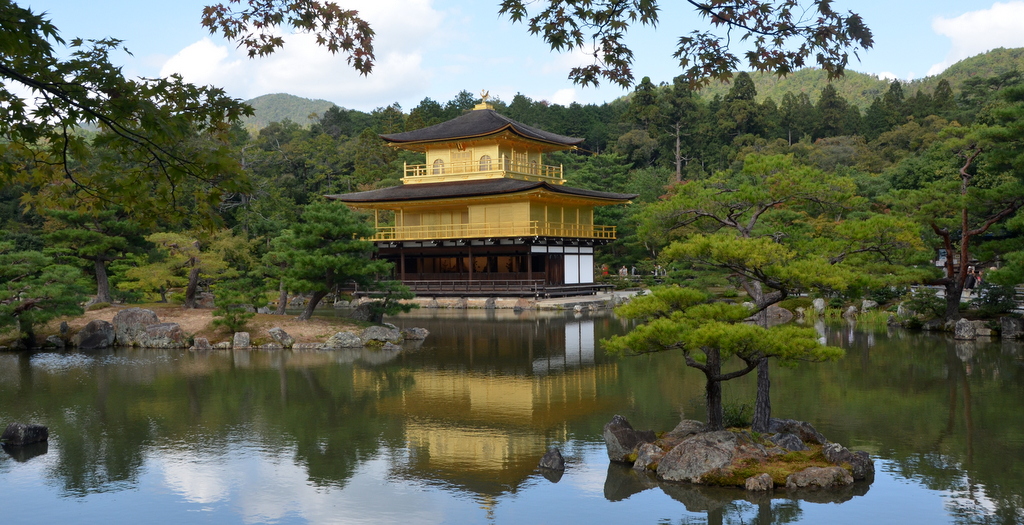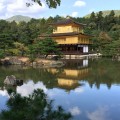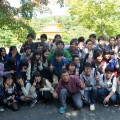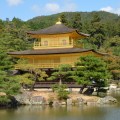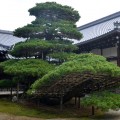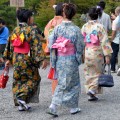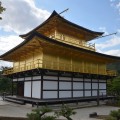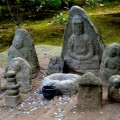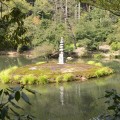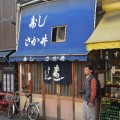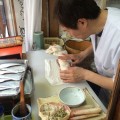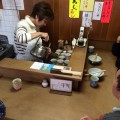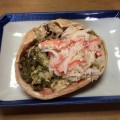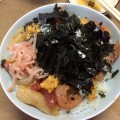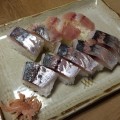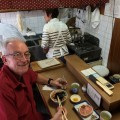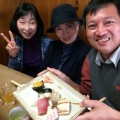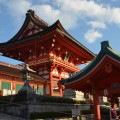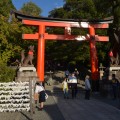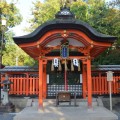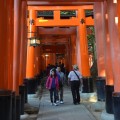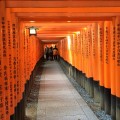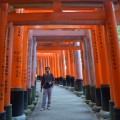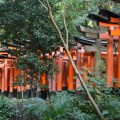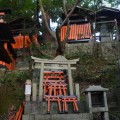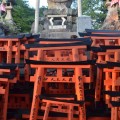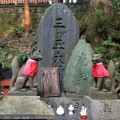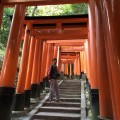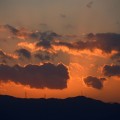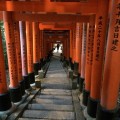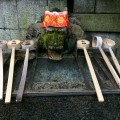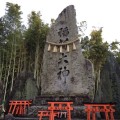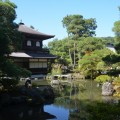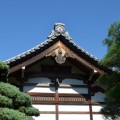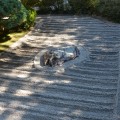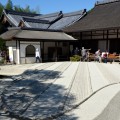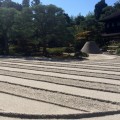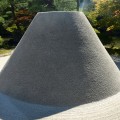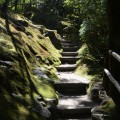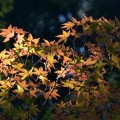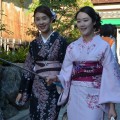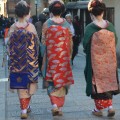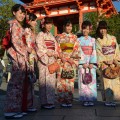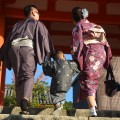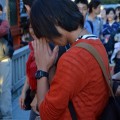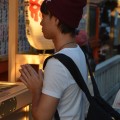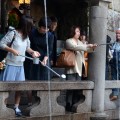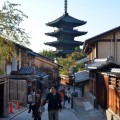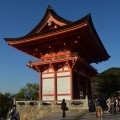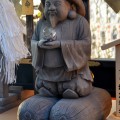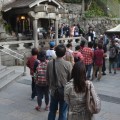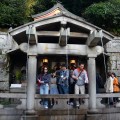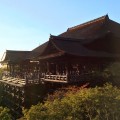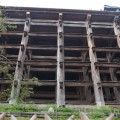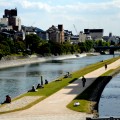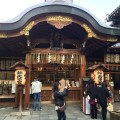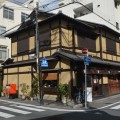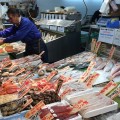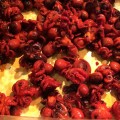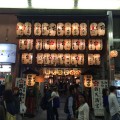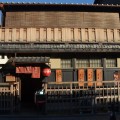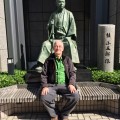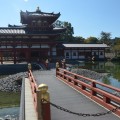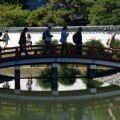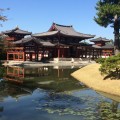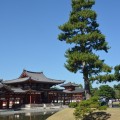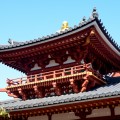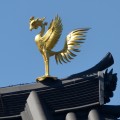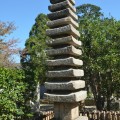Our host in Osaka had advised us which train to take to Fushimi, one of the “wards” of Kyoto, where Aric had booked accommodation in the Kuretake Ann-Inn . We arrived early, so we dropped our luggage and explored Fushimi. A pleasant surprise compared to hectic Osaka.
- A romantic canal
- Shopping gallery
- A temple
- Lunch
The main tourist attractions of Fushimi are the Inari shrine (see below) and the Sake museum. The water here has a reputation for being very clear and natural and one of the large Sake distilleries, Gekkeikan, is located here. It is easy to get addicted to this Japanese rice wine…:-)
- The Gekkeikan distillery
- High quality water
- Old Sake barrels
- Details…
- Of…
- The..
- Brewing process
- Complimentary tasting
After our museum visit we went to our guesthouse where we received a warm welcome from our host Adachi san. After retiring as a lawyer, he had developed the family house in a ryokan , a traditional Japanese inn. Our room had tatami flooring, sliding doors, there was a tea set and and kimonos were prepared for us. Recently he had added hot spring baths to the inn, and he was eager to explain how to use these baths in the correct way.
When we asked if we could have breakfast in the inn, he became even more enthusiastic,cooking was his hobby, but we could have it only two days later, because he needed time to prepare! We really felt at home in his inn, adn took a hot bath every evening. Following his suggestion to have a glass of sake while having your bath. Heaven!
The breakfast, in very Japanese style, was a delight, both for our eyes and on our tongue. The last night we movd to another, even more splendid room. Ryokans are not cheap, but it was one of the highlights of our trip
- Our room
- Ready for the night
- In Kimono
- Evening can be cool
- Our breakfast
- Serving a new dish
- One for the album
- The hot spring bath
- Decently enjoying sake
- Our room the last night
- Aric as Samurai
- Goodbye!
Kyoto is a town of temples and shrines and visitors run the risk of developing a temple syndrome after a few days. We decided to limit ourselves to a few of the most interesting temples and started with the Kinkaku-ji temple, the Temple of the Golden Pavilion.
It is a Zen Buddhist temple and the temple gardens are considered a prime example of Japanese garden design. The weather was beautiful, some of the trees were already in autumn colors. Of course we were not the only visitors..:-) It was nice to see quite a few Jaoanese girls in traditional dress.
- The golden pavilion
- Many school children
- Very golden..:-)
- Notice the tree support
- Traditional dress
- Another view of the pavilion
- Try to throw the coins in the bowl
- Nice gardens
- The restaurant
- Preparing the food
- Serving the drinks
- Delicious
- Tasty
- Sushi
- Not easy to take pictures
- Aric and the two ladies
In the afternoon we visited another temple, the Fushimi Inari shrine. Characteristic for this huge temple complex are the walkways lined with thousands of torii . A torii is the traditional Japanese gate, and, as Inari is the patron of business, each of these torii has been donated by a Japanese business.
 It is a photographers delight…:-). The temple complex is located on a hill and it takes a few hours to explore everything. Also here of course many visitors. Here is a collection of pictures. The temple complex contains numerous smaller shrines and visitors carry small torii up, with a prayer written on it, and leave them at these shrines.
It is a photographers delight…:-). The temple complex is located on a hill and it takes a few hours to explore everything. Also here of course many visitors. Here is a collection of pictures. The temple complex contains numerous smaller shrines and visitors carry small torii up, with a prayer written on it, and leave them at these shrines.
Even the sunset was red…:-) We could not reach the top of the hill, it was already dark when we left the temple. When you have only time for one shrine, I would suggest this one..:-)
- The entrance torii
- As seen from the outside
- Many shrines
- Left behind by visitors
- Climbing uphill
- Nice sunset
The following day we visited two more temples. First the Ginkaku-ji temple, another Zen temple, famous for its sand garden. The sand mound symbolises the Fuji mountain.
Personally I like this kind of quite austere temple design. Very pleasant garden, nice autumn colours.
- The Silver Sand Sea
- Autumn colours
In the afternoon we went to the Kiyumiza-dera Buddhist temple. It was a Saturday afternoon. there was a festive crowd, quite a few in traditional dress.
- Geisha’s
- Seen from the back
- Nice family
- Youngsters also praying
- Catching the water
The Kiyumiza temple was founded in 798, and its present buildings were constructed in 1633 It is is famous for its three “waterfalls”. Visitors can catch and drink the water, which is believed to have wish-granting powers
- Queuing to catch the water
- The main hall
- Built on wooden pillars
I found Kiyoto more attractive than Osaka. It still a big town, and the general townscape is ugly, but here and there you can still find nice old buildings, especially in the Gion district. Lively markets and everywhere temples. Here a mix of various scenes.
- The Kamo river
- One of many temples
- Old house
- Seafood stall
- Looks delicious
- Temple entrance
- Gion district
- Two samurai
Talking with our host the night before our departure, he asked us, did you visit the Byodo-in temple in Uji? We had to confess that we had never heard about it. It is nearby, he explained, and the temple figures on the 10 Yen coin. As we had some time in the morning before going to Wakayama, we decided to add one more temple to our list…:-)
And an attractive temple it was! An old one too. The central hall was built in 1053
- Entrance of the Phoenix Hall
- Nice tree
- Roof of the Phoenix hall
- One of the Phoenixes
After visiting this temple it was time to leave Kyoto and travel to our last destination Wakayama

